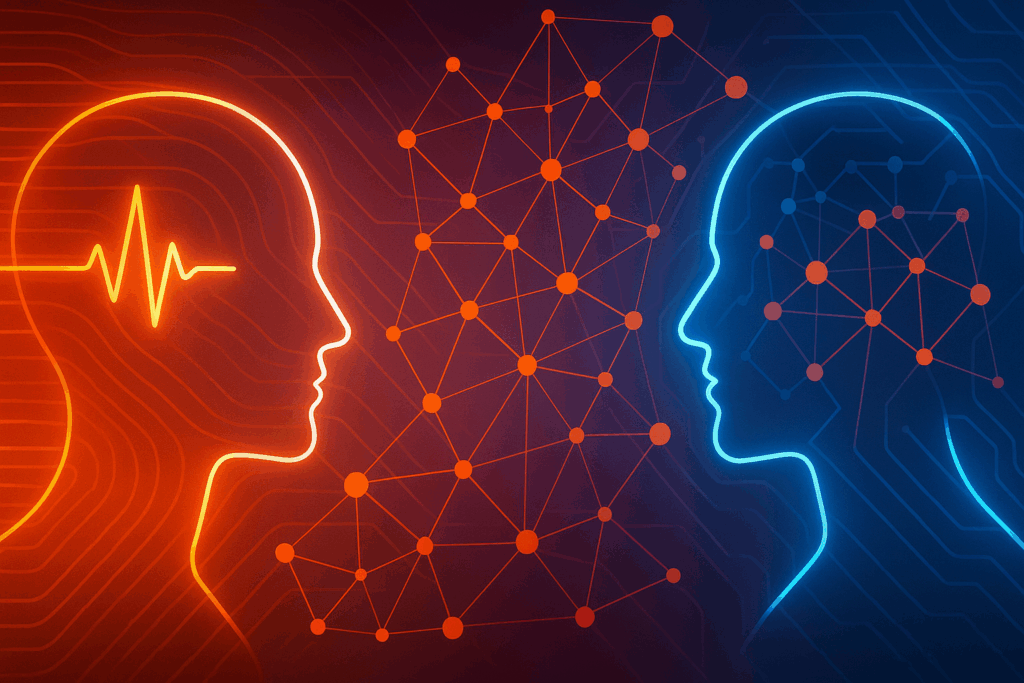A confluence of IT trends and achievements have made AI more achievable and affordable than ever before. That’s certainly good news, but it’s also wise to remember that AI announcements typically mirror a company’s specific talents and skills.
So, in AI, silicon vendors might focus on the importance of their products in machine learning performance. Or software vendors may tout the value their frameworks, algorithms and models bring to the AI table.
All fine and good, since artificial intelligence is a very large pool with space for lots of talent. But keenly focusing on smaller, often esoteric elements can make AI development resemble the proverb of the blind men and the elephant.
Do any vendors see, understand and effectively build out the bigger picture of AI? Absolutely, including IBM.
That shouldn’t be a surprise since the company’s work in AI goes back decades. But its efforts also cover numerous of focus areas and specific vertical use cases, including some one wouldn’t normally associate with IBM.
For example, the company recently announced new Watson AI toolsets pretrained for nine industries and professions, including the Watson Decision Platform for Smarter Farms. Let’s look at that solution and consider how IBM’s work in global agriculture reflects its larger AI strategy and tactical plans.
Global farming – A growing concern
What sparked the company’s work in agriculture? As noted in a blog by Ulisses Mello, lab director, IBM Research-Brazil and Sriram Raghavan, VP of IBM Research-India & Singapore, agriculture is a $2.4 trillion industry that serves as a foundation for economies worldwide. However, it also faces significant serious issues, such as climate change, population growth and food security.
Any one of those three factors would be concerning but together they could lead to catastrophic results. Add in other uncertainties, from local and regional weather events to rapid shifts in market demand and crop prices and you can understand why agricultural players are keenly focused on protecting and improving crop yields.
IBM Watson, The Weather Company and agriculture
What can IBM do? Quite a lot, as it happens. The company’s Watson platform is the public face for decades and billions of dollars of investments in AI and advanced analytics. Following a longstanding strategy, IBM’s AI solution development focuses on practice areas that correspond with the company’s industry and market experts, including those in IBM Research.
The Watson Decision Platform for Smarter Farms also takes advantage of other IBM offerings, particularly The Weather Company assets that the company acquired in 2015 which provide access to terabytes of highly detailed, regularly updated global satellite data.
In turn, the IBM PAIRS GEOSCOPE platform is used to aggregate and analyze multi-layer geospatial-temporal data (maps, satellite, weather, drone, IoT) using machine learning and advanced analytics. Since PAIRS processes and serves as storage component in the current system, it can both store and run queries on geo-referenced data.
The Watson Decision Platform for Smarter Farms offers new APIs, including,
- Yield History and Forecast for Corn – uses big data and machine learning to predict yield for corn crops two to three months in advance with only a limited amount of data and computing power. The models can also be used to determine yields for past growing seasons, thus enhancing validation of agriculture insurance claims and risk, optimizing supply-and-demand chain logistics and predicting commodity prices.
- Disease & Pest Indicators for Corn – predicts the risks in corn production, leveraging hyper-local weather forecast details (temperature, relative humidity, precipitation, etc. from The Weather Company) and crop specific inputs (sowing date, growth stage, etc.) to model the outbreak probability of various pests and diseases.
- High Definition Normalized Difference Vegetation Index (HD-NDVI) for Crop Health Monitoring – uses geospatial and satellite data to identify crop type and crop growth stage at a high – 30 meters – resolution. The resulting insights could be used to assess crop health, determine fertilizer, pesticide and irrigation schedules, validate crop insurance clams, predict yield and reduce risk in commodity trading.
- High Definition Soil Moisture (HD-SM) – is a high resolution, real-time measurement tool that monitors soil moisture at multiple depths (up to one meter) using a combination of AI algorithms and physical models along with satellite and weather model data sets. Satellite data can be combined with terrain data (land/vegetation type, atmospheric parameters and solar radiation) to simulate changes in soil moisture.
Why Brazil and India?
Why did IBM Research teams in Brazil and India play key roles in developing the new platform? Consider that agriculture has long been a major part in Brazil’s economy, leading the country to become the largest global exporter of beef, coffee, soybeans and crop-based ethanol. With nearly 100,000,000 hectares (about 250,000,000 acres) of fertile land undeveloped – a territory larger than France and Spain combined – agriculture will remain be a critical concern for Brazil and the world.
Agriculture has been central to life in India for thousands of years and remains the country’s demographically broadest economic sector, accounting for about half of the overall workforce. Currently, India ranks second in worldwide farm outputs, with agriculture and allied areas, like fisheries and forestry accounting for 13.7 percent of the country’s gross domestic product (GDP). Like other populous countries in equatorial zones, India is acutely aware of and concerned with the effects of global warming on its food supply. Improving and securing crop yields is, for India, a matter of life and death.
The Smarter Farms Platform is merely one area where IBM Research professionals are bringing new ideas and capabilities to global agriculture. The team in Brazil just built a prototype, the AgroPad, which produces simple, real time soil and water chemical analysis. In India, IBM Research has developed a suite of capabilities aimed at small farmers, and is also partnering with NITI Aayog to develop an AI-based pest and disease prediction model and real-time advisory for farmers.
Final analysis
The Decision Platform for Smarter Farms and eight other sets of new APIs for IBM Watson mirrors the company’s longstanding focus on vertical industry solutions. In fact, that substantial expertise in industry use cases is one of the reasons that IBM is so a valuable resource and partner for thousands of enterprise customers.
Along with spotlighting the skills and flexibility of IBM’s Research teams, the new agriculture solutions also underscore the critical importance of these markets to multiple groups and populations, from farmers, to equipment makers to seed and chemical suppliers to wholesalers and retailers to billions of individual consumers.
Are the new solutions perfect and complete? Not by any means but they mark a promising beginning for what is likely to become a larger set of Watson AI-enabled solutions for farmers and other agriculture professionals. In addition, they highlight IBM’s ability and willingness to tackle and find solutions for big, hard, seemingly intractable problems.
That skill is part and parcel of IBM’s depth of experience and the breadth of its technology portfolio, including solutions for artificial intelligence. When it comes to AI, the company will never be lost in the dark with the blind men and the elephant. Instead, IBM sees and understands the bigger picture in full light, in ways that provide consistent, consequential value to its customers and partners.
- Dell Concept Luna – Inspiring Sustainable Innovations with Circular Design - December 21, 2023
- AI Alliance: IBM, Meta, Dell and 50+ Founding Partners Pursue Open, Transparent and Safe AI Innovation - December 13, 2023
- Dell Technologies: Creative Partnering = GenAI Innovation - November 30, 2023




Good article! We are linking to this particularly great article on our website.
Keep up the great writing.